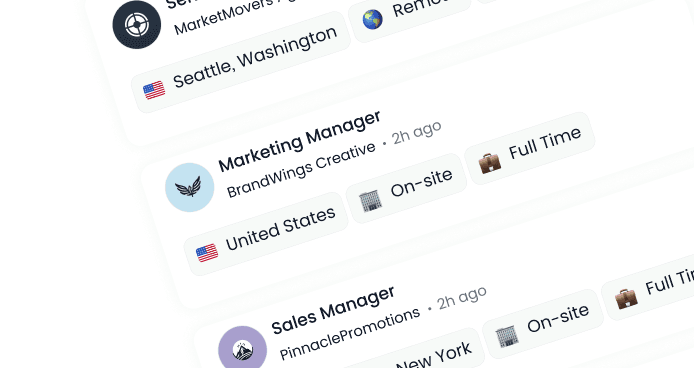Predictive Analytics in Recruitment – The Smarter Way to Hire
Published:
October 15, 2025
All
AI Recruitment
Recruiting Tips
Employer Branding
Candidate Experience
Workforce Planning
Hiring just got smarter — discover how predictive analytics is helping recruiters make data-driven, bias-free decisions.
Recruitment, like every other aspect of business, has evolved over the years. Not just through technology, although that played a major part of hiring process changes, but also by the ever increasing competition in the recruitment sector. It is imperative for companies to not only find top talent to fill in their vacancies, but also to anticipate future human resource requirements and that is where predictive analytics in recruitment comes into play.
The factors that make predictive analytics so powerful are that they are based on data. In fact in a LinkedIn article, more than 50% of talent acquisition professionals believed that AI-based predictive analytics will improve quality of hire and how they measure it.
So what exactly is this change all about and how can predictive analytics help you to transform the way you hire? Those are some of the questions we will answer in this blog, so we suggest you read this until the end.
What Is Predictive Analytics in Recruitment?
So, what exactly is predictive analytics in recruitment? Simply put it is the use of historical data to forecast future recruitment needs. Conventionally, it was done by people, but AI is getting more integrated to provide faster results. Beyond forecasting hiring needs, machine learning–based predictive models can also identify candidates with the highest potential for long-term success.
Unlike traditional analytics, which is focused on explaining what has already happened, predictive analytics looks forward to what can happen. For instance, rather than being told that sales positions have a high turnover rate compared to other departments in the company last year, predictive models can indicate which candidates for current positions have the highest likelihood of remaining for three or more years.
It’s worth noting that, predictive analytics is not intended to displace human judgment—it is meant to supplement it. Recruiters and hiring managers are still making the final decisions, but with more insight and less intuition.
Why Predictive Analytics is Important to Employers
Organizations that have built predictive analytics into their hiring process can achieve a greater competitive advantage. Here are some of the most significant advantages:
Reduced Turnover
By breaking down attrition trends by factors related to previous employment duration, skill fit, or cultural alignment, organizations can pinpoint the most promising candidates who are most likely to remain and succeed. This translates into a higher retention of long-term hires and lower rehiring costs. For instance, a retail organization may find that candidates with certifications in customer service hold much longer retention times and use this information to fine-tune future hires.
Faster Hiring Decisions
By analyzing data such as expertise, skill sets, and previous job performance, predictive models can quickly identify candidates with a higher chance of success — reducing time-to-hire significantly. This translates into a shorter time-to-fill and faster onboarding. For high-volume jobs like call center agents or seasonal warehouse workers, these time savings can ease recruitment teams' strain during season.
Stronger Employer Brand Strategy
Consistently bringing the right people on board always improves culture, performance and ultimately an organization's reputation. Predictive analytics aids superior hires that contribute to a positive employer brand strategy to attract future hires. Candidates pay attention when hiring processes are efficient and considerate of their time—both things boosted by predictive systems.
Streamlined Workforce Planning
Analytics enable talent acquisition teams to not only develop predictive hiring models that help them forecast talent needs for the future but also enable them to develop talent pipelines so that they can grow them in advance of business growth and keep recruitment in tune with that. For example, if a company knows the emergence of new technology means it will need to hire more data analysts in two years, predictive analytics can be used to target recruiting advertising campaigns to start building pools of talent early on.

How Predictive Analytics is Used in Recruitment
The process usually fits into a clear framework:
Data Collection - from ATS systems, resumes, video interviews, assessments and workforce performance data.
Data Cleaning - Ensuring that inputs are unbiased, standardized, and usable. Data quality is essential for successful results, so this is a crucial stage.
Model Building - Using algorithms (e.g., Random Forest, regression models) to determine hiring patterns. Various algorithms can be tested, with the most predictive one selected for deployment.
Scoring & Forecasting - Ranking candidates, forecasting time-to-hire, or prompting attrition concerns. For example, from a predictive score, we may recommend that Candidate A has an 80% chance of meeting performance benchmarks.
Actionable Insights - Giving actionable insights to recruiters that improve decision making. This could include what sourcing channels you get the highest ROI from or when to re-recruit passive candidates.
Examples and Application of Predictive Analytics in Hiring
Predictive analytics is already changing recruitment advertising and workforce planning in practice:
Candidate Ranking: With the ability to rank the top applicants who are most likely to succeed, recruitment algorithms assist in directing recruiter's energy.
Talent Attraction with AI: Data insights reveal which sourcing channels consistently yield top-quality hires — helping you focus your recruitment budget where it matters most.
Candidate Experience Personalization: Hiring managers using PA can create a more personalized experience of high potential candidates and even update communication style to make the individual more receptive and engaged during the hiring process.
Automated Recruitment Campaigns: Integrating predictive models with AI-powered tools can automate outreach emails or even schedule interviews with top-ranked candidates.
In a 2022 study in the telecommunications industry, for example, predictive model output improved applicant screening accuracy, with Random Forest models securing more than 80% recall for candidate classification showing the actual application potential of data-driven recruitment.
Another example from a practical perspective has to do with healthcare, where predictive analysis is employed to anticipate shortfall of the workforce and pre-emptively hire nurses with specialized certifications.
Final Thoughts
Predictive recruiting analytics is a strategic tool that enables organizations to plan for the future workforce, mitigate potential risks related to hiring, and manage candidate experience more effectively. By pairing people with smart data-insights, recruiters can realize smarter, fairer, and faster hiring.
Plan for tomorrow — don't just hire for today. With predictive analytics, recruitment becomes proactive, strategic, and future-ready. Find out how predictive analytics can keep your recruitment efforts future proof with DigitalHire.
FAQs
Does predictive analytics replace recruiting managers?
No. It provides input and predictions to enhance decision-making, but human judgment is still crucial.
How much data do companies need to get started?
Even with small datasets, organizations can start by examining turnover trends, time-to-hire, and candidate source effectiveness.
Can predictive analytics help diversity hiring?
Yes — if implemented carefully and ethically. By removing biased criteria and focusing on performance-related factors as well as the focus on elements connected with performance can help minimize unconscious bias in the hiring process.
What are the risks of predictive analytics in recruitment?
The main risks are data bias, algorithm over-reliance and lack of transparency. These are reduced by good governance.
FREE JOB POST
Looking to fill a position quickly? Post your job for free and reach top talent today!




